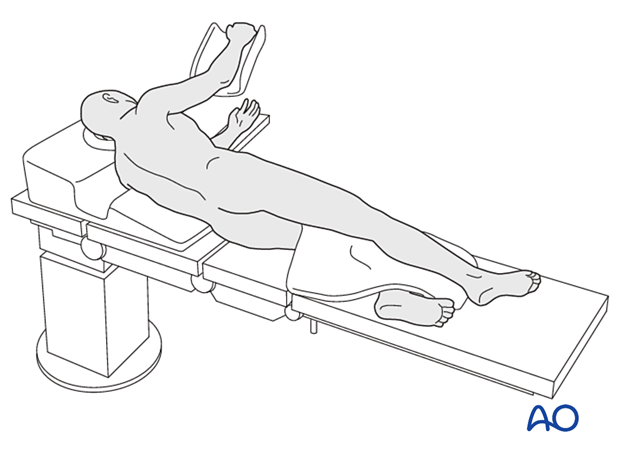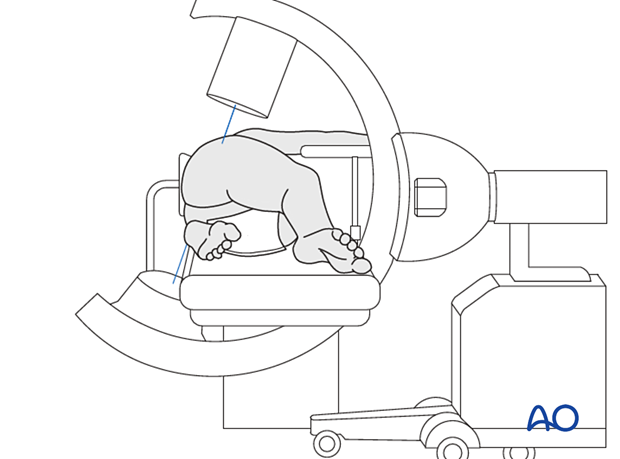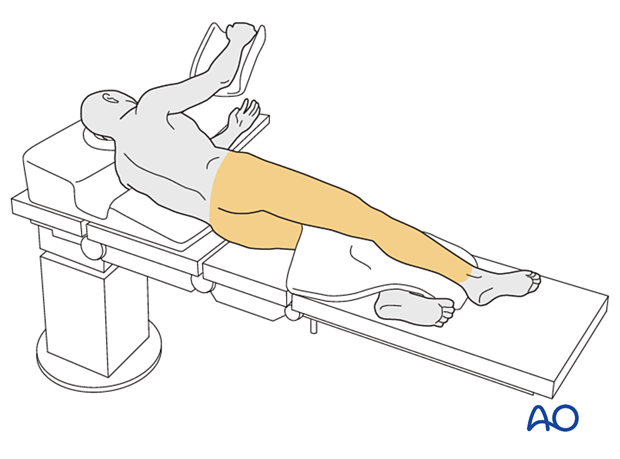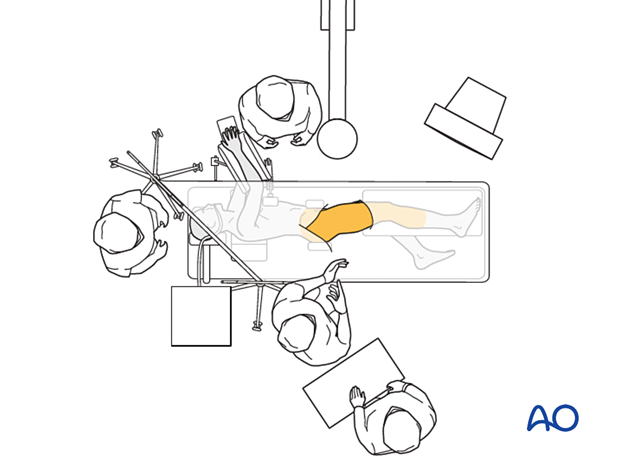Lateral decubitus position
1. Indications
Lateral decubitus positioning may be used for posterior arthroplasty approaches and access to the femoral head and posterior wall of the acetabulum.

2. Preoperative preparation
Operating room personnel (ORP) need to know and confirm:
- Site and side of the fracture
- Type of operation planned
- Ensure that the surgeon has marked the operative site
- Condition of the soft tissues (fracture: open or closed)
- Implant to be used
- Patient positioning
- Details of the patient (including a signed consent form and appropriate antibiotic and thromboprophylaxis)
- Comorbidities, including allergies
3. Perioperative care for elderly hip-fracture patients
Routine perioperative care includes:
- Brief intravenous antibiotics
- VTE prophylaxis (before, during, and after surgery)
- Nutritional supplementation
- Pain management without oversedation
- Prevention of pressure sores
- Early mobilization
- Early discharge planning
- Osteoporosis evaluation and management
For more details, see the additional material on perioperative care for elderly hip fracture patients.
4. Anesthesia
This procedure is performed with the patient under general or regional anesthesia.
5. Patient positioning
Place the patient in a lateral position with the ipsilateral arm in an arm sling or on pillows.
Place padded cushions under bony prominences to avoid excessive pressure.

6. C-arm positioning
Before draping, make sure proper image intensifier view in both AP and lateral directions can be obtained.
Axial views may be difficult to obtain.

C-arm position for lateral view

7. Intraoperative options for VTE prophylaxis
During the operation, some centers provide VTE prophylaxis with sequential mechanical compression on the contralateral leg.
8. Skin disinfection and draping
Disinfect the exposed area from above the iliac crest to the mid-tibia with the appropriate antiseptic solution.
Free drape the affected limb with a single-use U-drape. Cover the lower leg and knee with a stockinette and fix it with tape. Drape the leg to be freely moved.
Drape the image intensifier.

9. Operating room set-up
The surgeon, an assistant, and ORP stand behind the patient. An assistant stands on the contralateral side of the table.
Place the image intensifier on the opposite side of the surgeon.
Place the image intensifier display screen in full view of the surgical team and the radiographer.













